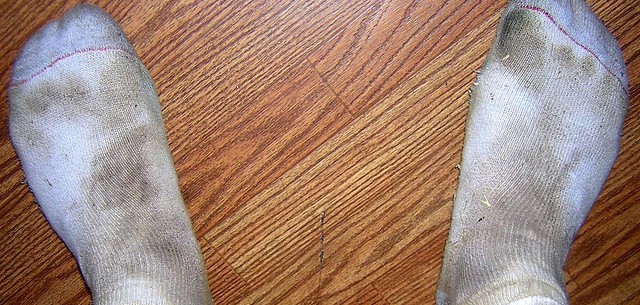As a continuation of my comprehensive taste test kit I bought from Siebel Institute, last weekend I conducted off flavor taste test #2 and #3. If you missed #1, acetyldehyde, think…raw pumpkin and fresh cut grass. But today we are going to be talking about acetic acid, which is probably much more easily identifiable, but harder to get rid of!
- Flavor Name: Acetic Acid
- Similar To: Vinegar, sour apples, sour feet (my interpretation)
- Causes: Bacterial infection* (lactobacillus, pediococcus, acetobacter, brett)
- *Note: Some sources say that an excessive acid rest, mashing too long, and a few other causes for acetic acid flavors. However, the underlying cause of the acidity is in fact bacteria. In the case of the acid rest, two days or more is required to lower the pH of the mash, and in modern homebrewing, is actually inoculated with cultured bacteria.
- How To Fix It: Use proper sanitation (with a time machine). Unfortunately, this isn't something that's going to go away. Some folks recommend waiting it out to see if it clears up, but the ‘wait and see' method won't yield great results all the time. You might have to dump it, or get used to a sour beer. Depending on how it was infected, it may actually taste nice!
Just be careful if you bottled it, as it may continue to ferment in the bottles. Bacteria can eat sugars that yeast cannot, but they will still produce carbon dioxide as a bi-product, causing bottle bombs.
Table of Contents
Acetic Acid: The Dose
When I cracked open bottle #2, I was surprised at how pungent the smell was. In fact, as I poured the doses into my beer samples, I spilled a bit on my fingers and had to wash my hands to get it off before drinking because I just couldn't get rid of the smell.
The smell was not exactly vinegar, though it was quite close. there was something less acidic and more sour to it. This is why I listed “sour feet” as a flavor comparison. That flavor didn't really show up in the beer, but the smell of the pure chemical reminded me of taking off my socks after an all day hike in the summer time.
…not just stinky feet…sour feet.

The Taste Test
I wanted to keep a constant for the testing sessions, so I used another bottle of Firestone Walker 805. TBH, I'm not a big fan of this beer, but the light flavors work well for the “easy” tasting test. The other two I chose were Slow Ride from New Beligum for a hop forward test, and Fireside Chat from 21st Amendment for the challenge. It's a higher ABV, strongly spiced winter warmer.

Pre-Dose Tasting Notes
805
- crisp, effervessent
- fruity esthers, kolsh-like
Slow Ride
- light body
- floral, piney hops
Fireside Chat
- strong holiday spices – cinnamon, star anise, ginger, cloves, cardamom
- dark, caramelly malt flavors
- thick mouthfeel, malt forward
Post-Dose Tasting Notes
805
- first dosing was light, and hard to identify acidity from crisp carbonation
- higher dose made the sourness more apparent in smell and flavor
Slow Ride
- very apparent in both smell and taste
- subdued hoppiness gives way to acidity and flatten overall beer flavor
Fireside Chat
- sweet maltiness reduced
- sourness most obvious in aftertaste
- not that bad and might make an OK sour beer with proper bacteria inoculation and flavor balance!
Acetic acid was slightly harder for me to identify than that Acetyldehyde. I think this is because I really do enjoy sour beers and have grown to have a fondness for that bit of acidic character. However, the tartness achieved by sour beer should not be confused with vinegar and sour feet! Also, it's not appropriate for all styles, traditionally speaking of course. But nowadays, with brett IPAs, sour black ales, ales and various mixed or wild yeast cultures, I guess anything goes, and it really depends on what you are trying to achieve.
Have you ever had a beer sour on you? What did you do and how did it work out?
Leave a Reply